Large Milkweed Bugs have hatched out as there were many nymphs on the Butterfly Weed in Catch the Wind during the first week of August. This was only a few days after seeing both Large and Small Milkweed Bugs mating and inspecting this plant.
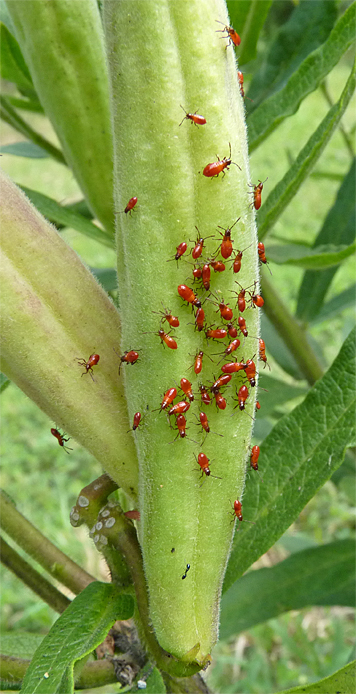
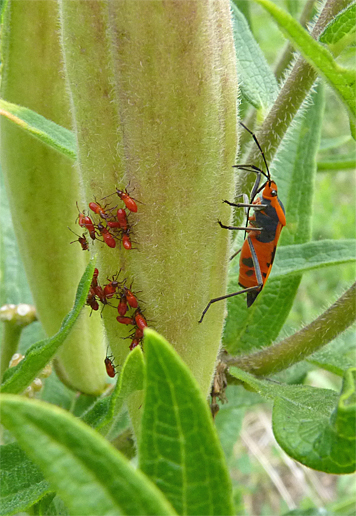
Seven days later the nymphs began to take on some of the characteristics of the adults.
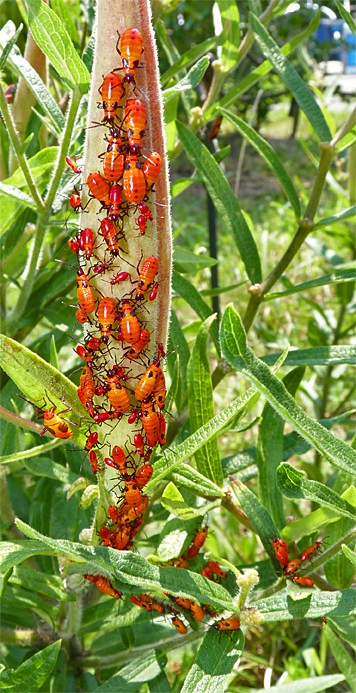
Fall Webworms have been at work on the Museum’s trees for a month or more. These caterpillars construct their web around the leaves that they’re feeding on at the time, enlarging the web as they go. They typically build their webs near the tip of a branch, whereas tent caterpillars, which are sometimes confused with webworms, build their “tents” in a crotch of a tree.
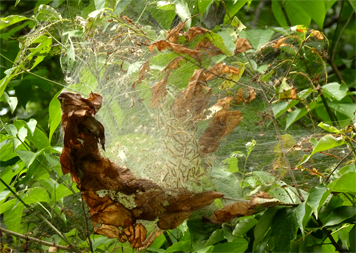
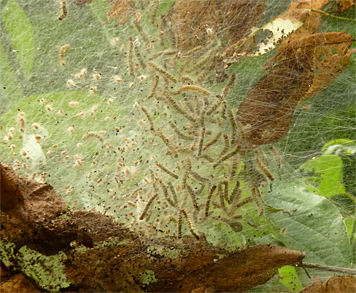
The webworms don’t venture out of the web, but, as mentioned, add on to the web as they go. Tent caterpillars feed outside of their tents and retreat to the protection of the tent after feeding.
While you’re out strolling through the Dinosaur Trail keep an eye out for Potter Wasp “pots” on the horsetail along the trail. Potter Wasps build little pot-like mud nests in which to lay their eggs, one egg per pot.
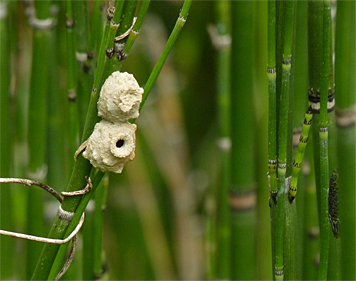
The pot is stocked with small caterpillars and or sawfly larvae for the wasp’s larva to feed on once it hatches. Once the pot is stocked with food and the egg is in place, the entry hole is sealed. After the wasp larva hatches, feeds and pupates, it will have to chew its way out of the pottery.
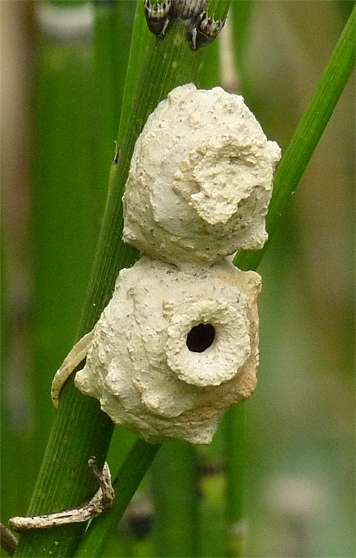
On an relatively cool rainy day during the third week of August (8/19) I came across a jumping spider that had captured a female Blue Dasher (or an immature male, not sure). The dragonfly was apparently waiting out the morning rain perched among the grass and the spider seized the moment.
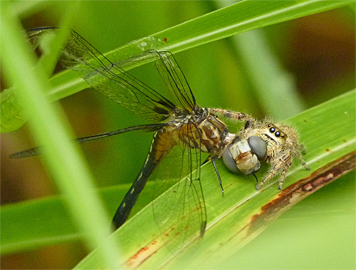
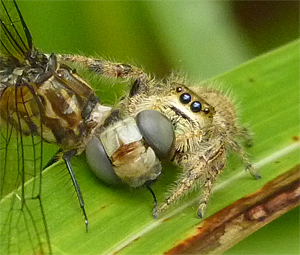
The same day, in the tall grass on the north side of the Wetlands, a very large Robber Fly was able to snatch a wasp.
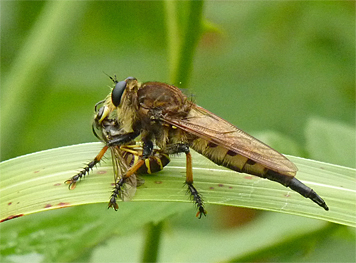
Robber flies are very quick and agile fliers and often wait in ambush at flowers or other places of heavy insect traffic to strike out at all who pass by.
Never a dull moment in the Wild!
Very impressive, Ranger Greg!
Why, thank you Wendy!